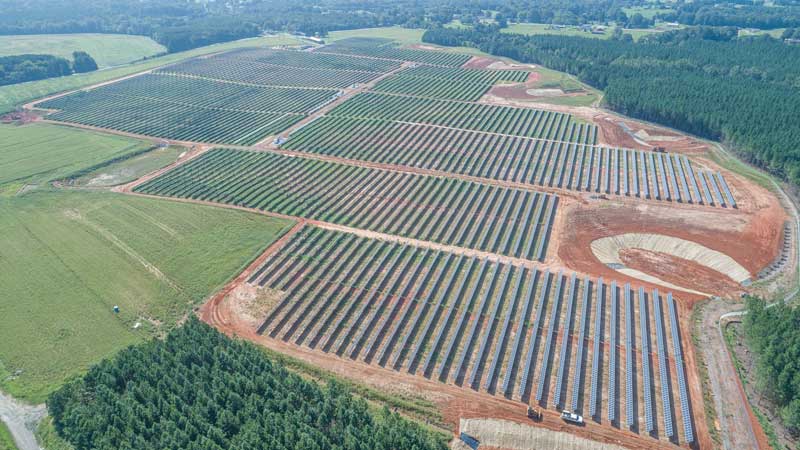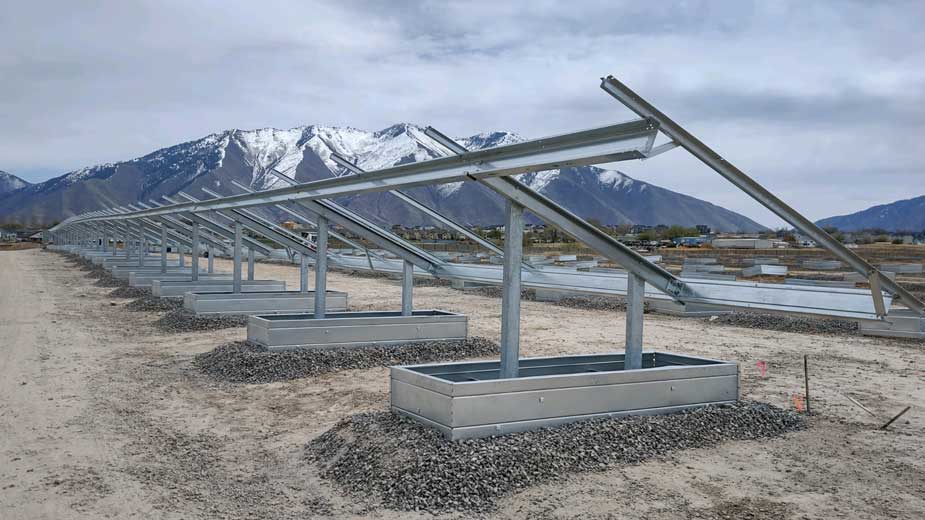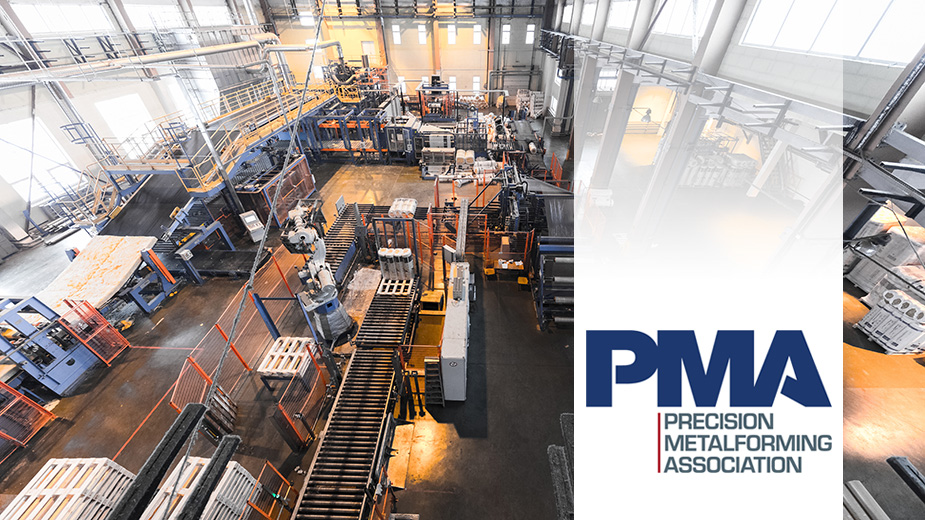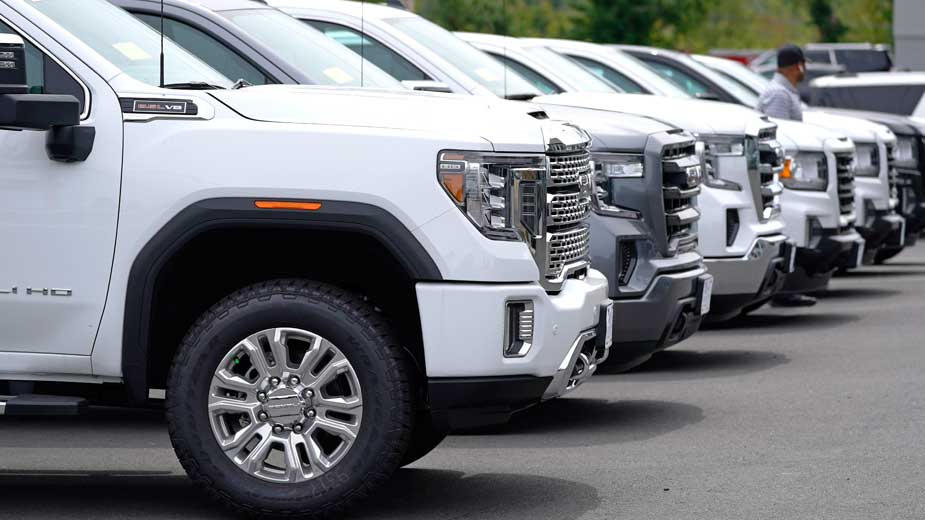A Ray of Sunlight for Solar Power Industry in Northeastern Ohio
YOUNGSTOWN, Ohio — The solar power boom that has been underway for several years in western Ohio is finally making inroads into the eastern half of the state – including a proposed solar farm in Columbiana County.
The inequity of utility-scale solar panel arrays – which are defined as 50 megawatts of capacity or more – in Ohio is stark. Draw a line down the middle of the state, from Erie County in the north, to Lawrence County in the south. To the west, there are 14 utility-scale solar farms in operation, plus another one under construction and 25 in the preconstruction phase. There are also 15 pending applications for new ones.
To the east of the line, there are no operational solar farms and none under construction.
But now, there are two applications currently before the Ohio Power Siting Board. One is in rural Franklin Township, in western Columbiana County, near Summitville. The other is in southern Harrison County, about 10 miles southwest of Cadiz.
The Summitville project is being developed by Kensington Solar, which is part of Liberty Utilities, a subsidiary of Algonquin Power of Toronto, Canada. Development of the project, which is still in the land acquisition phase, began in 2020. Kensington expects to begin construction in 2023, with the plant going online in the latter part of that year.
Jane Harf, executive director of the nonprofit Green Energy Ohio, couldn’t give a good reason for the slowness of the industry to spread across the state but suspects the availability of suitable land, usually farmland, is a factor. Northeastern Ohio is notoriously cloudy, but Harf said that is not an issue. Solar panels still collect energy on overcast days – just not as much.
The Columbiana County project will produce up to 145 megawatts of alternating current, and up to 171 megawatts of direct current, according to Kensington’s application. It sprawls over 2,264 acres on dozens of privately-owned land parcels from which Kensington has – or soon will – secure 40-year leases with the owners.
The site is adjacent to the village of Summitville and is bisected north to south by state Route 644. It is roughly bounded by Columbiana County Route 844 to the north, Summitville’s eastern boundary to the east, the Columbiana County-Carroll County border to the south, and the Columbiana County-Stark County border to the west. The solar power panels and infrastructure will occupy half of the project area, with the rest remaining natural.
SITE SELECTION
Stephanie Bose, director of communications for Liberty Utilities, said the Franklin Township site was selected after a careful evaluation revealed it met the company’s standards for community impact, ability to connect to the local power grid, and state-level support for renewable energy.
“Columbiana County has an official Appalachia designation of being economically challenged,” Bose said in an email. “A solar project brings economic benefit to the county and the local community, such as tax payments.”
Bose said many jobs will be created by using local labor during the construction of the array and for its subsequent operation. The often-cloudy skies over northeastern Ohio are not a significant obstacle to a productive solar array, she said.
“We have conducted [an] assessment using sophisticated software to [determine] the amount of electricity that can be generated by a facility in this location and while it is lower than what can be produced from a facility in southern Ohio, the difference is not material,” Bose said.
“Further, there have been advancements in the technology used for solar photovoltaic panels, which are used to generate electricity, whereby the panels can generate electricity from diffused light from a cloudy day.”
GROWING FAST
Green Energy Ohio’s Harf says Ohio’s young solar power industry is growing fast but hurdles could start popping up.

“The state legislature passed a bill last year that brings local government entities into the process,” Harf says. “They can establish exclusionary zones.”
Forty solar facilities or projects in the state are grandfathered in and unaffected by the new law, she pointed out. “Green Energy Ohio opposed this bill,” Harf said, but noted it has not had a significant effect yet.
Small solar projects, which are not utility-scale, can still proceed with a minimum of interference.
“They don’t have to go through the [state] power-siting board,” Harf said. “A lot of companies are developing their own renewable energy resources on-site. JP Morgan Chase has a huge solar array in the Columbus area.”
A small solar array is also part of the Ultium Cells plant under construction in Lordstown.
At the smallest level, Harf said there are quite a few solar panels on government buildings across the state, as well as on farms. There is even some interest among homeowners. “It saves money and makes a statement about protecting the environment,” Harf said.
Solar panels on a house usually are not enough to handle all of its power needs. “You couldn’t unplug from the power grid,” Harf said. “It’s usually not enough to offset your electricity usage.”
Some homeowners are considering solar panels to provide enough power to charge their electric vehicles, she said.
A measure currently in the Ohio legislature would allow for community solar power sharing.
Under House Bill 450, residential subscribers to a community solar project could share in the savings from an off-site generation site, according to energynews.us.
MAKING THE HARDWARE
A solar array basically consists of photovoltaic modules that use sunlight as an energy source to generate electricity.
While most module makers are overseas, many American companies are involved in manufacturing the racking – including Solar FlexRack, a subsidiary of Northern States Metals of Youngstown. The company, based in an industrial park off Salt Springs Road on the west side, was launched in 2009.
It offers solar tracking units, which use an electrical motor to adjust the angle of the racks so they absorb maximum sunlight. Solar FlexRack also makes fixed-angle racks that can be anchored by being driven into the ground or secured by a concrete foundation. “Those are used in landfills or places that have rocky terrain,” said Staci Lombardo, marketing manager.
Solar FlexRack has completed jobs of all sizes. “We will do a half-megawatt to 300 megawatts,” said John Philibin, regional sales manager. “We take on all comers.”
The company is approached by entities at all stages of the industry – from developers, to installers, to construction subcontractors. Its racking is is custom made. “[The requirements are] different for a job in Georgia than in Buffalo, New York,” Philibin said, as an example.
Solar FlexRack also offers installation of its racks, teaming up with subcontractors to handle the work. It does not do residential jobs and it does not sell its product to distributors, Philibin said.
Pictured at top: An array of photovoltaic modules using Solar FlexRack racking in Spanish Fork, Utah. (Photo courtest of Solar FlexRack)
Copyright 2024 The Business Journal, Youngstown, Ohio.


